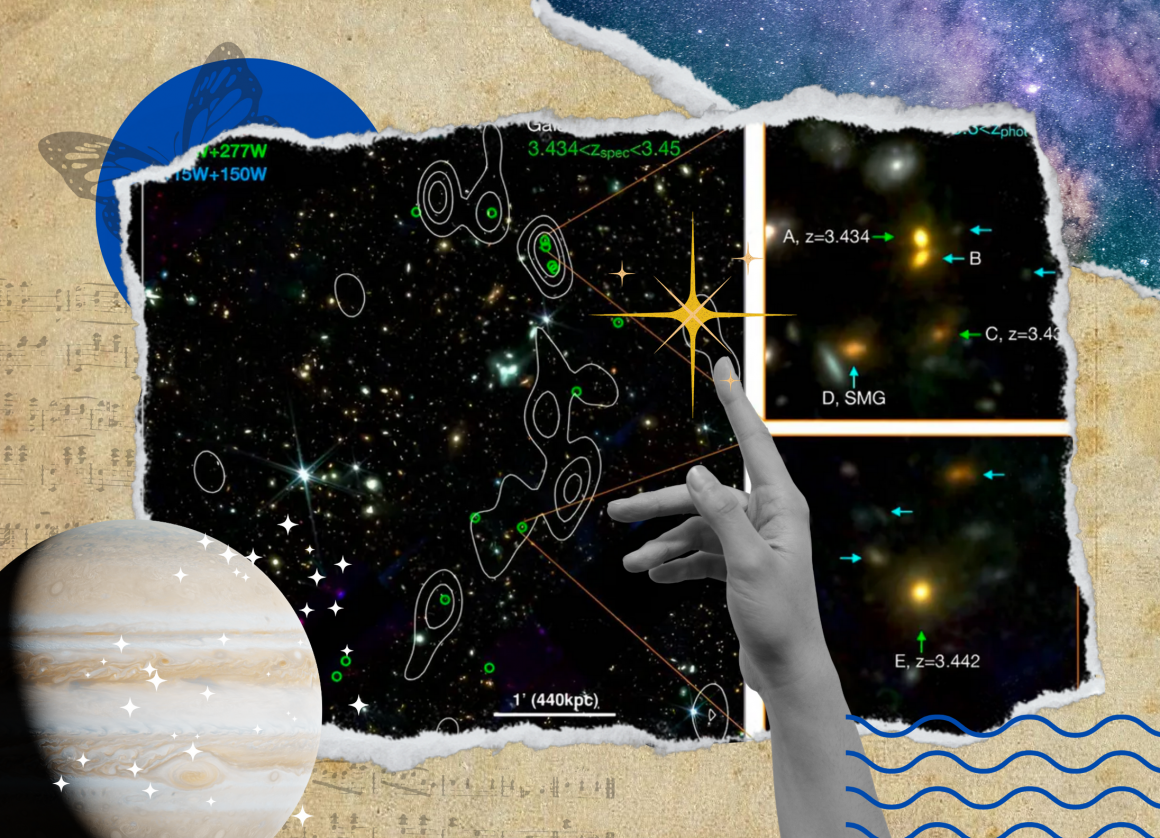
The Cosmic Vine, a novel discovery of an ancient collection of galaxies
By Leonie O’Sullivan, December 19 2023—
The James Webb Space Telescope (JWST) has enabled astronomers from Denmark’s Cosmic Dawn Center (DAWN) to discover new structures deep in outer space. The researchers have identified a new chain of 20 connected galaxies in a recent study published on arXiv, a preprint archive.
The JWST is in a league of its own, with unparalleled selectivity and extended wavelength coverage, allowing scientists to search far into the cosmos. The astronomers identified novel structures in the Extended Groth Strip (EGS), a section of space between the two constellations Ursa Major and Boötes. Ursa Major, also known as the great bear, earned its name from its distinctive shape and is one of the largest constellations in the northern sky. Boötes is a smaller, diamond-shaped constellation.
The new string of galaxies has been named the Cosmic Vine, with a redshift of 3.44. The redshift describes the change in wavelength of light as galaxies travel further away from us. Ever since the Big Bang 13.7 billion years ago, the universe has been expanding with receding galaxies, causing their light to redshift. Their wavelengths of light elongate and move to the red side of the light spectrum. This recently identified collection of galaxies is about 11.8 billion light years away from us. The incredible technology of the JWST allows scientists to look back in time, as the light would have left the Cosmic Vine when our own galaxy was just 1.9 billion years old.
The shape of the newly discovered Cosmic Vine is exceptionally elongated, resembling an archer’s bow, with a length of about four megaparsecs. It would take light 13.7 million years to travel the length of this structure. In comparison, its width is much smaller, just 650 thousand light years wide. To put this in perspective, light can travel across our Milky Way in just 100 thousand years.
The Cosmic Vine contains two exceptionally large, quiescent galaxies, which the researchers named Galaxy A and E. When a galaxy gets older, they start to run out of gas and become quiescent as they stop making stars. Our sun is approximately halfway through its lifetime with about five billion years of gas left to burn, so there is no need to worry about the Milky Way becoming quiescent anytime soon. A merger-triggered starburst quenched Galaxies A and E in the last 500 million years. This occurs when galaxies become close to one another and merge, inducing an intense burst of star formation, resulting in gas expulsion from the galaxy.
This discovery of the Cosmic Vine has allowed scientists to learn more about the origin and evolution of our universe and galaxies within. Its enormous size and great complexity at such a high redshift have left many unanswered questions for the future work of astronomers. If you would like to learn more about this exciting discovery and see the images of the Cosmic Vine for yourself, you can watch this video from NASASpaceNews.
